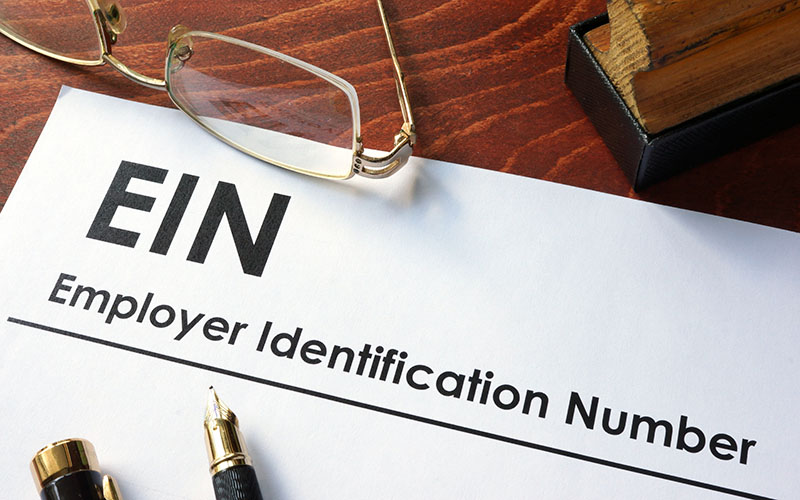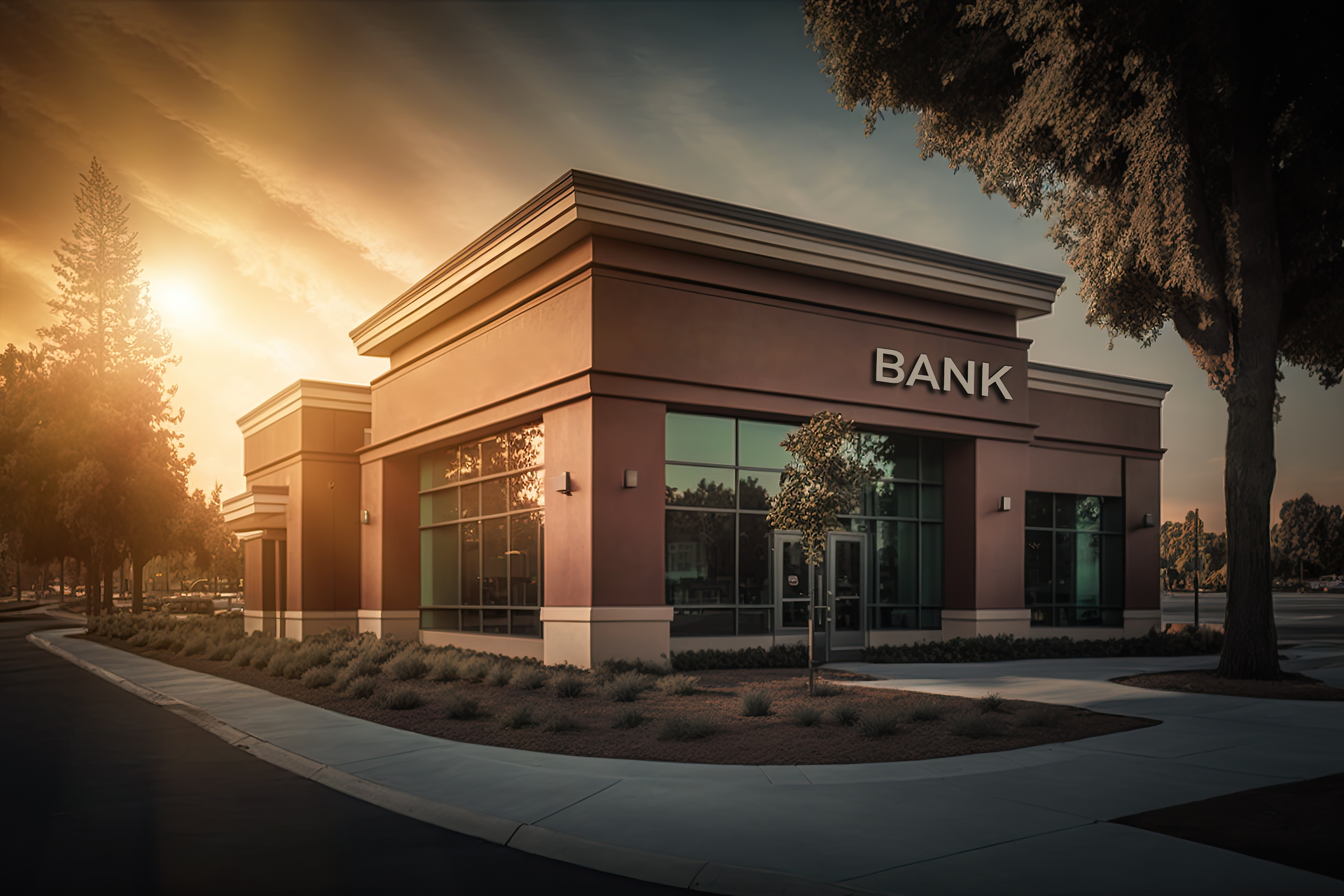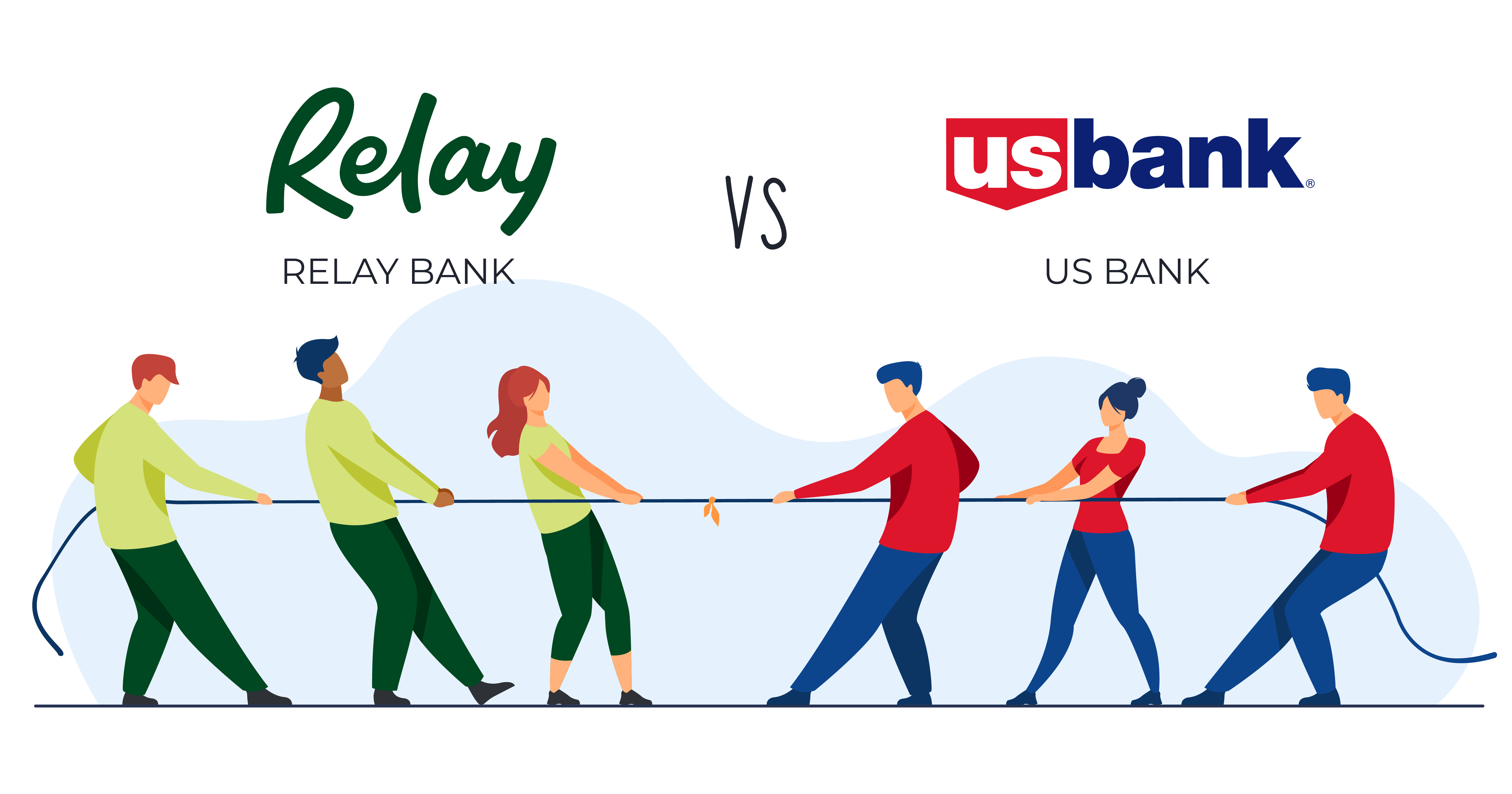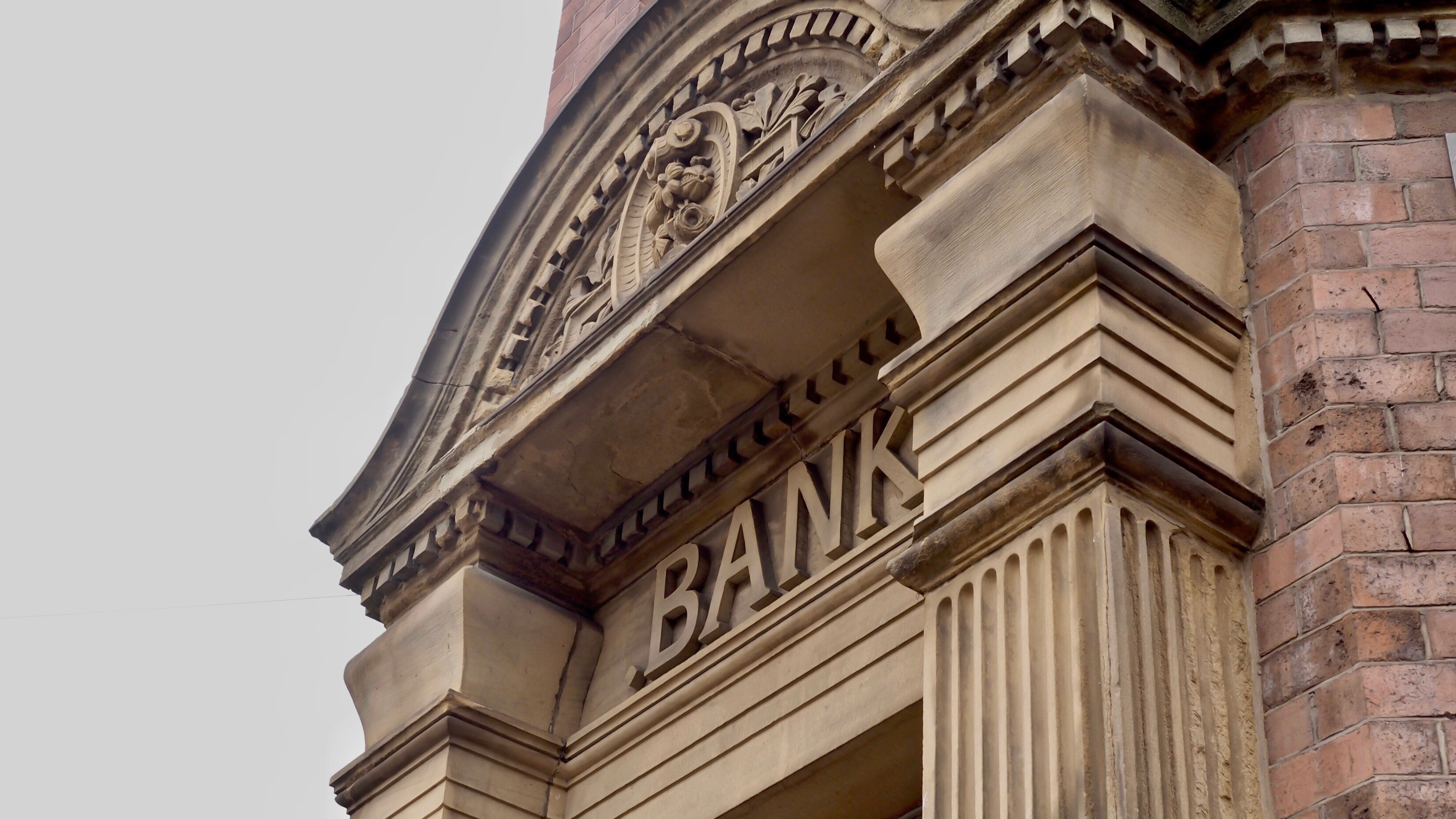Wells Fargo vs Bank of America Business Checking: Which is Better?
Key Takeaways
- Both Bank of America and Wells Fargo extend business loans to firms with strong credit profiles
- Bank of America boasts a diverse range of options, encompassing term loans, SBA loans, and equipment financing
- On the other hand, Wells Fargo provides several credit lines that come with rewards, as well as SBA loans
- For term loans and business credit cards, Bank of America is a preferred choice
- For unsecured business lines of credit, consider Wells Fargo

Bank of America and Wells Fargo are two of the United State’s best-known and largest financial institutions. If you’re looking for a convenient business checking account, you may want to compare Bank of America vs. Wells Fargo business accounts to find the best one for your needs.
Both Bank of America and Wells Fargo have a nationwide network of branches and ATMs and offer a host of financial services beyond business checking. If you already have a relationship with one of these banks, you might consider using that bank for your checking accounts, but it’s still important to compare the pros and cons of each.

Wells Fargo vs. Bank of America Business Checking Accounts Overview
Before you start comparing Wells Fargo vs. Bank of America business checking accounts you should learn more about them.
Bank of America was formed in 1998 through a merger of multiple banks, making it the newer company. However, some of the financial institutions involved in the merger were founded as far back as the 1780s.
Bank of America is one of the world’s largest financial services companies with $3 trillion in assets.
Wells Fargo has a bit more history than Bank of America. It was founded in 1852 in Des Moines Iowa and later merged with other financial institutions. Wells Fargo has roughly $2 trillion in assets and 5,200 branches.
Bank of America and Wells Fargo offer a few different checking options.
| Wells Fargo | Bank of America |
|---|---|
| Initiate Business Checking | Business Advantage Fundamentals Banking |
| Navigate Business Checking | Business Advantage Relationship Banking |
| Optimize Business Checking |
Bank of America offers two main accounts, focusing on different business sizes, whereas Wells Fargo provides three, including an option for large corporations.
Both the Initiate Business Checking and Business Advantage Fundamentals Banking accounts target smaller or new companies. The Navigate Business Checking and Business Advantage Relationship Banking are for medium-sized firms.
One thing that differentiates Bank of America and Wells Fargo is that Wells Fargo also has an account option for very large companies, the Optimize Business Checking account.
Wells Fargo vs. Bank of America Business Checking Accounts Comparison
Bank of America and Wells Fargo both offer checking accounts targeted at different types of companies. This is because the type of business checking services that your company needs depends heavily on its size. Smaller companies have very different needs than larger ones.
That means that the best way to compare Wells Fargo vs. Bank of America checking accounts is to compare the ones with similar target audiences.
Wells Fargo vs. Bank of America - Basic Accounts
Both Bank of America and Wells Fargo have checking accounts targeted at smaller companies, the Wells Fargo Initiate Business Checking and Bank of America Business Advantage Fundamentals Banking accounts.
| Wells Fargo Initiate Business Checking | Bank of America Business Advantage Fundamentals Banking | |
|---|---|---|
| Best for | Businesses that won’t use their debit card and that will make limited transactions each month | Businesses that want to avoid fees and that plan to use their debit cards on a somewhat regular basis |
| Minimum deposit | $25 | $100 |
| Monthly fee | $10 | $16 |
| Requirements to avoid monthly fee | $500 minimum daily balance, OR $1,000 average ledger balance | Maintain a minimum balance of $5,000 across your accounts, OR Spend at least $250 on your debit card |
| Other fees | $5,000 in fee-free cash deposits per month, then $0.30 per $100 deposited, 100 free transactions per month, then $0.50 per transaction | $7,500 in fee-free cash deposits per month, then $0.30 per $100 deposited, $10 for a business savings account, $15 for account management tools, 200 free teller transactions/checks written per month, then $0.45 per transaction |
| Other features | Card-free ATM access, Mobile transfers and payments, Small business phone service, Customized business checks | Link business and personal bank accounts, Zelle for business, Cash flow monitoring, Digital debit cards, Interest rate and credit card rewards booster, Payroll services cash back |
Wells Fargo and Bank of America offer similar accounts for small businesses. One of the biggest differences is in how you can avoid the monthly fee.
Wells Fargo makes the primary way to avoid the fee a $500 minimum daily balance, which is much easier to meet than Bank of America’s $5,000 minimum balance. However, if you plan to use your business debit card to make purchases, Bank of America lets you avoid the fee with just $250 in purchases each month, which should be easy to meet.
Bank of America also has higher transaction limits before you start incurring fees and offers relationship perks, so Bank of America is likely the better choice for most businesses. Wells Fargo only wins if you plan to avoid using your debit card and make a limited number of transactions each month.
Wells Fargo vs. Bank of America – Mid-Tier Accounts
Both Bank of America and Wells Fargo offer checking accounts for mid-sized businesses.
| Wells Fargo Navigate Business Checking | Bank of America Business Advantage Banking | |
|---|---|---|
| Best for | Companies that expect to carry a lower balance | Companies that need to make more transactions each month or that can benefit from Quickbooks integrations |
| Minimum deposit | $0 | $100 |
| Monthly fee | $25 | $29.95 |
| Requirements to avoid monthly fee | $10,000 minimum daily balance, OR $15,000 in average combined business account balances | Maintain an average balance of at least $15,000, OR Become a Preferred Rewards for Business member |
| Other fees | $20,000 in cash deposits with no fee per month, then $0.30 per $100 deposited, 250 fee-free transactions per month, then $0.50 each, No fees for stop payments, cashier’s checks, money orders, incoming wire transfers, and two outgoing domestic wire transfers | $20,000 in cash deposits with no fee per month, then $0.30 per $100 deposited, $0 for a business savings account, $0 for account management tools, 500 free teller transactions/checks written per month, then $0.45 per transaction |
| Other features | Two fee-free non-Wells Fargo ATM withdrawals per month, Pays interest, Card-free ATM access, Mobile transfers and payments, Small business phone service, Customized business checks | QuickBooks integrations, Customizable employee account access, One additional business checking and savings account at no fee, Link business and personal bank accounts, Zelle for business, Cash flow monitoring, Digital debit cards, Interest rate and credit card rewards booster |
| Payroll services cash back |
Both Bank of America and Wells Fargo’s business checking accounts for mid-sized companies are quite similar. Both charge similar fees and have similar requirements to avoid the fees. Bank of America has a slightly higher minimum balance but allows for more fee-free transactions. That means you can base your choice on those features.
Companies that don’t expect to have a high balance can stick with Wells Fargo while those that plan on having many transactions in a month can go with Bank of America.
One nice perk of Bank of America’s account is how it integrates with accounting tools like Quickbooks, which can make it much easier to manage your business’s finances.
Wells Fargo vs. Bank of America – High-End Accounts
Bank of America falls short of Wells Fargo by only offering two business checking accounts. Wells Fargo’s Optimize Business Checking is explicitly targeted at large businesses. Big companies that want to stick with Bank of America will need to use the same account as mid-sized companies.
| Wells Fargo Optimize Business Checking | Bank of America Business Advantage Relationship Banking | |
|---|---|---|
| Best for | Very large businesses that need power account management tools | Large businesses that can’t maintain a $100,000 balance or who don’t need the highest tiers of customer service |
| Minimum deposit | $25 | $100 |
| Monthly fee | $75 | $29.95 |
| Requirements to avoid monthly fee | None. Apply your earnings allowance to reduce monthly and other eligible fees, Earnings allowance is like interest, based on the earnings credit rate and investable balance of your account | Maintain an average balance of at least $15,000, OR Become a Preferred Rewards for Business member |
| Other fees | $0.30 per $100 deposited, 250 fee-free transactions per month, No fees for stop payments, cashier’s checks, money orders, incoming wire transfers, and five outgoing domestic wire transfers | $20,000 in cash deposits with no fee per month, then $0.30 per $100 deposited, $0 for a business savings account, $0 for account management tools, 500 free teller transactions/checks written per month, then $0.45 per transaction |
| Other features | Up to five linked business checking accounts, No fee for linked Business Platinum Savings, Treasury Management services, including digital payments remote deposit capture, and fraud protection, Account management through Wells Fargo’s CEO and CEO Mobile tools | QuickBooks integrations, Customizable employee account access, One additional business checking and savings account at no fee, Link business and personal bank accounts, Zelle for business, Cash flow monitoring, Digital debit cards, Interest rate and credit card rewards booster, Payroll services cash back |
Ultimately, for large businesses, Bank of America falls short by only offering two business checking accounts. Wells Fargo can better meet the needs of big companies by offering a specialized account with powerful account management tools.
While the lack of fee-free transactions and cash deposits is a bit of a drag, Wells Fargo makes up for it by letting you offset those fees with earnings from your account balance. In the end, you could wind up earning enough to have far more fee-free transactions than Bank of America’s account offers.
Why Choose Wells Fargo Business Checking?
There are many reasons to consider choosing Wells Fargo for your business checking account.
You have a large business
Bank of America only has two business checking accounts while Wells Fargo has three, including one specifically designed for large companies. If you have a large company that needs the additional cash management services offered by the Wells Fargo Optimize Business Checking account, you’ll want to go with Wells Fargo.
You expect to have a low account balance
On the other end of the spectrum, if you have a small company that won’t have much cash in your account, Wells Fargo is the better choice. Bank of America’s minimum balance requirements are higher than Wells Fargo’s so you can avoid more fees by opting for Wells Fargo.
You want easy branch access
If you want the convenience of being able to walk into a branch when you need help with your checking account, Wells Fargo is the winner. Bank of America has just 4,100 physical branches compared to Wells Fargo’s 5,200.
Wells Fargo Business Checking Pros and Cons
| Pros | Cons |
|---|---|
| Around 4,700 branches and 12,000 ATMs | Online banks offer higher interest rates on savings and CDs |
| Possible to waive monthly service fees | No money market account |
| Lower no-fee balance requirement | Monthly service fees |
Why Choose Bank of America Business Checking?
Bank of America can be a strong choice of bank for a few reasons.
You plan to use your business debit card
If you have a Bank of America business checking account as a small business, you can avoid the monthly fee by spending just $250 on your debit card each month. That’s a relatively low bar to clear, meaning you should be able to avoid fees without much issue.
You use Quickbooks
Bank of America integrates its checking accounts with Quickbooks, which can be a boon for companies that use it for accounting and bookkeeping services. You’ll be able to easily track and categorize your transactions.
You already have a relationship with Bank of America
Bank of America’s Preferred Rewards program offers perks to customers who have a larger relationship with the bank. You can benefit from better rewards from Bank of America credit cards, elevated interest rates, and more.
If you already have a Bank of America bank account or credit card, the Preferred Rewards program may be enough to sway your decision.
Bank of America Business Checking Pros and Cons
| Pros | Cons |
|---|---|
| Around 3,900 branches and 15,000 ATMs | Higher no-fee balance requirements |
| Possible to waive monthly service fees | No money market account |
| Higher savings interest rates with larger balances | Monthly service fees |
What to Look For in a Business Checking Account
When deciding between Wells Fargo and Bank of America for business checking accounts, you've likely already weighed many considerations in your quest for the ideal account for your enterprise. However, it's common for many small business owners to feel the urge to expedite this often tedious process. While the allure of quickly selecting an account is tempting, hastily jumping in can be perilous.
Selecting the right business checking account from the outset is crucial. Transitioning between accounts becomes increasingly cumbersome, especially when vendors and payment systems are already linked to a particular account. Starting with the right bank can spare you the hassle of future shifts.
Most established banks offer a variety of business checking accounts, each designed to cater to specific client needs. If you're newly established or require only basic functionalities like making and receiving payments, opt for a simple account with minimal fees. However, if your needs are more complex, demanding advanced tools or a higher number of free transactions, then a more comprehensive account might be necessary. Recognizing this distinction early on can streamline your banking experience as your business evolves. Ideal banks not only accommodate your immediate needs but also foster your company's long-term growth.
Beyond this, it's essential to consider other aspects like monthly fees. These can gradually erode your balance if you're unable to meet the waiver requirements. Be attentive to the frequency of cash deposits, wire transfers, and other monetary transactions you make monthly, as banks vary in their charges for these services.
Bottom Line
Bank of America and Wells Fargo both offer strong business checking account options. Wells Fargo is the only one with an account explicitly aimed at very large companies, but if you’re running a small or mid-sized business, either option has strengths and weaknesses.
Before you open your checking account with Bank of America, Wells Fargo, or any other bank, take the time to consider the pros and cons of each to ensure you’re making the right choice for your business.
Compare some of our other top business banking companies, including Lili, Bluevine, and Novo.
Which is better: Bank of America or Wells Fargo?
It’s hard to state a clear winner between Bank of America and Wells Fargo in most situations. Both banks offer strong accounts for small and mid-sized businesses. However, Wells Fargo offers a purpose-made account for large companies, which makes it the winner in that category.
Which bank is legitimate: Bank of America or Wells Fargo?
Bank of America and Wells Fargo are both legitimate banks. However Bank of America may be more trustworthy. It has an A+ rating from the Better Business Bureau compared to Wells Fargo’s F rating. This poor rating is likely due to Wells Fargo’s fraudulent account scandal.
What are other Business Banking Options to Consider?
Trying checking out the following:
- Our Lili Bank Review
- Our BlueVine Bank Review
- Our Relay Bank Review
- Our Found Bank Review
- OUr US Bank Review
Edited by:
Bryan Huynh
•
Product Tester & Writer
























































































